Mastering Catch Surfing and Bodyboarding Techniques
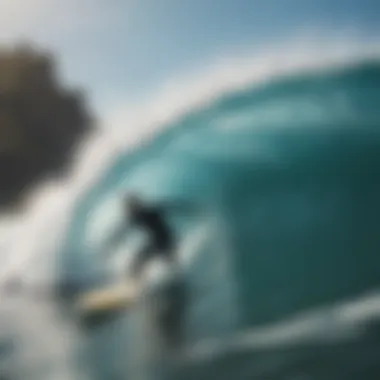
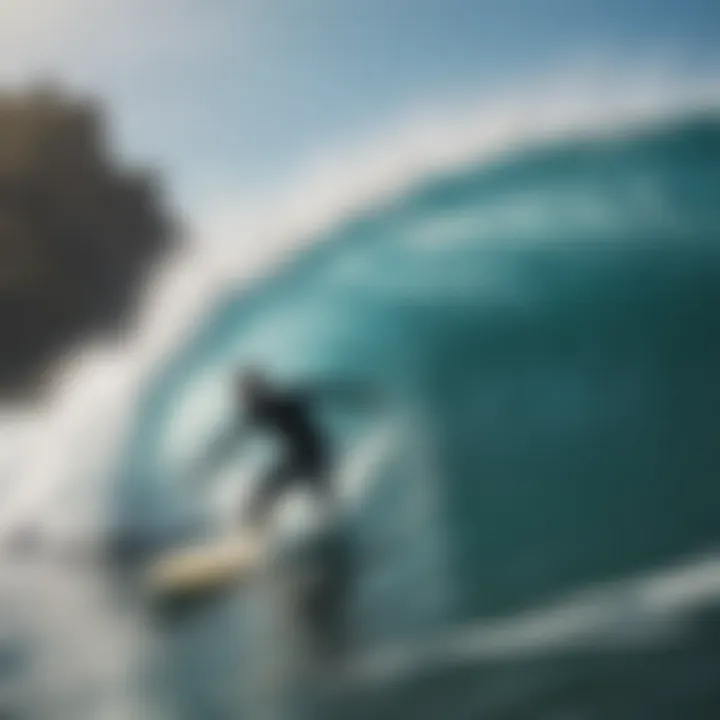
Intro
Catch surfing and bodyboarding offer exhilarating ways to engage with the ocean's waves. Each sport, while distinct in its techniques and culture, shares a foundational respect for the sea and the thrill of riding waves. In the realm of surf culture, these practices serve not only as adrenaline fuelled pursuits but also as expressions of creativity, camaraderie, and environmental awareness. This article will shed light on the skills needed for each sport, the essential equipment tailored to optimize performance, and the community fabric interwoven among surfers and bodyboarders alike. For many, the ocean is a canvas, and every ride is a brushstroke.
Surfboarding Techniques
Beginner Tips for Mastering the Basics
Starting out in catch surfing or bodyboarding can feel daunting at first, akin to learning a new language. However, the beauty of these sports lies in their accessibility. First off, choose the right beach – look for mellow, unbroken waves to practice on. This allows beginners to build confidence without being overwhelmed.
Next, understanding the pop-up is crucial. This refers to the motion of transitioning from a lying position to standing on your board. Practising on the beach without the waves can make this step second nature. Moreover, it helps to maintain a low center of gravity which stabilizes your stance.
Another important aspect is paddling technique. Strong paddling can make the difference between catching a wave or being left behind. When you paddle, it��’s about rhythm and energy. Short, quick strokes will conserve strength and allow you to get the momentum needed to ride the wave.
Finally, be sure to read the ocean. Understanding the currents and swells can greatly enhance your experience. Identifying where waves break can guide your positioning to catch them at the right moment. Surf forecasting websites, local surf shops, and community forums like reddit.com can provide valuable insights for new surfers.
Advanced Techniques for Seasoned Surfers
For those who have mastered the fundamentals, it's time to delve into more refined techniques that can elevate your performance. Carving, for instance, is a technique that allows the surfer to maintain speed while changing direction. It's akin to dancing on water, and practice will make it feel effortless.
The cutback is another advanced move. This entails turning back towards the breaking wave after riding down the line, allowing you to regain speed while maintaining flow. This skill not only enhances your ride but also demonstrates a strong command of your board.
Lastly, consider integrating aerials into your repertoire. These techniques require confidence and a sound understanding of wave dynamics. Aerials showcase an advanced level of artistry and understanding of the board and wave interaction.
Surfboard Equipment
Reviews of the Latest Surfboards on the Market
The diversity in surfboards can be overwhelming for many, so it’s wise to understand what suits your style best. Brands like Catch Surf have made a splash with their soft-top boards, ideal for beginners who want a little more forgiveness. These boards offer buoyancy and stability while maintaining the fun factor.
On the other hand, the classic wood boards by Bing Surfboards provide seasoned surfers with the precision needed for advanced techniques. Their crafting methods ensure each board is tailored for performance and style.
Such choices in boards denote a larger conversation about the variability in design and purpose, as well as how personal style influences decisions.
Essential Gear for Every Surfboarder
When it comes down to the equipment, selecting the right gear is just as vital as choosing the board itself. Suitable items include:
- Wetsuits: Vital for warmth and protection. Look for brands like O'Neill or Rip Curl that cater to various water temperatures.
- Leashes: A must-have to ensure your board stays close after wipeouts. Choose one that matches your board’s size and your skill level.
- Wax: It seems simple, but surfboard wax affects grip significantly. Always select the right kind for your local climate.
- Fins: Correct fin placement is essential for your board’s control and maneuverability.
When all these elements come together, surfers can enjoy a more rewarding experience in the waves.
In essence, both catch surfing and bodyboarding are about connecting with the wave and embracing the ocean's energy. Whether you ride on a board designed for precision or float with the gentle rhythm of a bodyboard, what matters is the moment you share with the sea.
Preface to Catch Surfing
Catch surfing, alongside its cousin bodyboarding, holds a unique place in the hearts of wave enthusiasts. To understand its significance, one must first appreciate how it differs from traditional surfing. Catch surfing generally focuses on riding smaller, more forgiving waves—perfect for those just breaking into the water sports scene or looking for a laid-back experience. This can make it more accessible for various skill levels, and it showcases a level of inclusivity often less emphasized in the more athletically demanding aspects of surfing.
In this exploration, we're going to dive headfirst into the nuances that define catch surfing. From the techniques that fuel its practice, to the essential gear, and the community it fosters—everything plays a part in shaping how surfers interact with the surf.
Understanding the Basics
To grasp the full scope of catch surfing, it’s vital to start with the fundamentals. Catch surfing often employs specific types of soft-top surfboards, which provide added stability and buoyancy, making them ideal for beginners. These boards tend to be wider and shorter, allowing for easier maneuverability in smaller waves.
In essence, the practice emphasizes riding as opposed to performing tricks or aggressive maneuvers. You’ll find that catch surfing often involves a more relaxed approach, allowing participants to enjoy the soothing rhythm of the waves while working on their balance and paddling skills.
The concept of timing in catch surfing is key. Surfers must understand how to read incoming waves—essentially waiting for the perfect moment to paddle and catch the crest as it rises. This aspect of the sport often provides an enjoyable learning curve, as each wave can act as a new lesson in patience and attentiveness.
The Appeal of Catch Surfing
Catch surfing brings a few appealing factors that resonate with many. Firstly, its low-pressure environment attracts individuals who may otherwise shy away from the more adrenaline-fueled aspects of traditional surfing. Observers often see friends and families sharing waves, reminding everyone of the sport's communal nature. The accessible style also invites a blend of age groups, ensuring that both young surfers and seasoned veterans can enjoy the thrill together.
Moreover, the culture surrounding catch surfing is imbued with a strong sense of connection to nature, inspiring surfers to engage with their surroundings. Each session often becomes an opportunity to appreciate the ocean while also bonding with others who share similar interests. In an age where stress and hustle dominate life, the appeal of enjoying time well spent by the water cannot be understated.
"Catch surfing allows for a beautiful connection with both the waves and the people you share them with."
Not to mention, catch surfing can serve as a charming entry point for aspiring surfers. The skills learned in catch surfing are transferable to more advanced techniques when the time comes to transition to traditional surfing. So, it’s more like a rite of passage, where participants can hone their balance, improve their paddling ability, and cultivate a true appreciation for what lies beneath the ocean surface.
The Fundamentals of Bodyboarding
Understanding the fundamentals of bodyboarding plays a crucial role for anyone delving into this captivating sport. It’s not just about riding waves; rather, it's about mastering a blend of history, technique, and skill that has evolved markedly over the years. Bodyboarding isn't a pastime but a lifestyle that embodies waves, water, and community.
Historical Context and Evolution
Bodyboarding, often overshadowed by its stand-up surfing counterpart, has a rich history that can be traced back to ancient Polynesian cultures. The first instances of wave riding pertain to the use of solid wooden boards as early as 2000 years ago. These early innovators sought not just recreation but a deep connection with the ocean, which remains central to the bodyboarding ethos today.
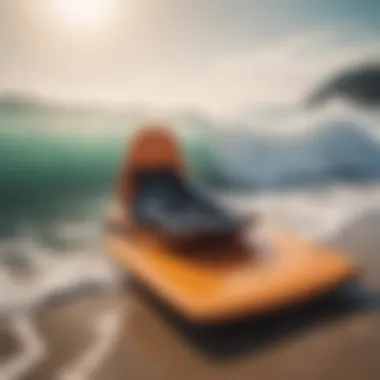
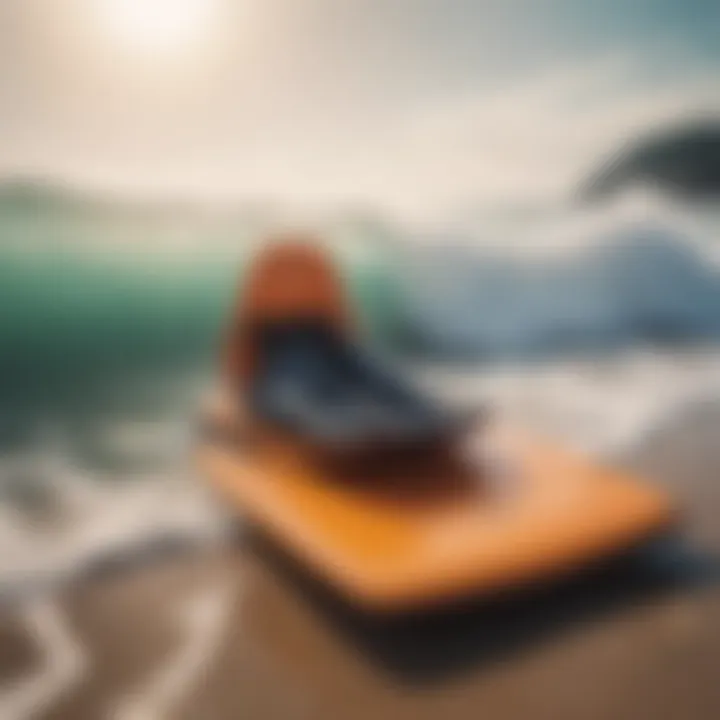
With the 1970s surge in surf culture, bodyboarding found its footing in California. Inventors like Tom Morey revolutionized the scene in 1971 with the creation of the Morey Boogie Board. This modern foam and flexible design opened new dimensions for riders, making the sport accessible to many. Today, bodyboarding has grown into a respected discipline with diverse styles, fostering an ongoing evolution that reflects both personal creativity and advances in technology.
Core Techniques and Skills
Mastering bodyboarding demands a thorough grasp of several core techniques. Here are some key skills every aspiring bodyboarder should focus on:
- Body Positioning: Keeping a low and stable center of gravity is vital. Riders must balance their weight evenly across the board to maximize maneuverability.
- Paddling Techniques: Effective paddling is crucial to catching waves. Utilizing strong strokes can make all the difference in getting ahead of the wave and positioning oneself effectively.
- Wave Selection: Understanding which waves to ride is skillful art. A keen eye can differentiate between the powerful and the rolling waves, optimizing the experience.
- Turning and Maneuvering: Many bodyboarders falter here. Learning how to angle the bodyboard correctly can lead to sharper turns, allowing for exciting rides and better control on the wave.
"The beauty of bodyboarding lies in its accessibility and versatility. It thrives in diverse wave conditions and invites participation from all skill levels."
Each of these techniques requires practice, patience, and a healthy dose of ocean awareness. The essence of bodyboarding is not only about the thrill but also cultivating respect for the ocean and fellow riders. For many, it becomes a lifelong journey of discovery amidst the waves.
Essential Equipment for Catch Surfing
The right gear can make or break your experience when engaging in catch surfing. Whether you’re a beginner holding a surfboard for the first time or a seasoned rider looking to refine your setup, understanding the essentials is crucial. The right equipment not only ensures maximum enjoyment but also plays a significant role in safety and performance in the water. Let’s delve into the primary components you’ll need to get started in this thrilling sport.
Choosing the Right Surfboard
Selecting the right surfboard is pivotal in determining your performance in catch surfing. Surfboards come in various shapes, sizes, and materials, and each variation caters to different surfing styles and conditions.
When considering a surfboard, think about your skill level first. A longer, wider board can provide stability for newcomers, allowing them to catch waves with more ease. Conversely, experienced surfers often gravitate towards shorter boards that provide agility and speed. Here are key factors to consider:
- Size: Beginners might prefer boards around 8 to 9 feet long, while more experienced surfers could choose boards that range from 5 to 7 feet, depending on conditions.
- Material: EPOXY boards are lightweight and durable; however, traditional POLYETHYLENE boards give a classic feel that some surfers love.
- Tail Shape: The tail design affects control and maneuverability. A squarer tail can provide better speed and solid grip during turns.
Don’t hesitate to visit local surf shops, where staff can help you feel the boards and provide recommendations based on your surfing style. It’s often recommended to try a few different boards through rentals before making a purchase; learning through experience is key.
Safety Gear: Must-Haves
While the thrill of catching waves is exhilarating, ensuring your safety is paramount in catch surfing. Many surfers advocate for specific safety gear that can significantly enhance your time in the water. Here’s a rundown of the necessary items:
- Leash: This often-overlooked gear links you to your board. A good leash will prevent your surfboard from becoming a dangerous projectile in the water.
- Wetsuit: Depending on the water temperature, a wetsuit can be critical. It insulates your body, keeping you warm during longer sessions.
- Surf Helmet: For those challenging surf spots, consider wearing a helmet to protect against impacts with your board, rocks, or other surfers.
- Sunscreen: Just because you're in the water doesn't mean you are safe from sun damage. Opt for a reef-safe sunscreen to protect both your skin and the ocean.
Taking precautions before heading out is essential. As the saying goes, "better safe than sorry," and investing in quality safety gear can mean the difference between a fantastic day on the waves and a day filled with anxiety or injury.
Proper equipment is not merely a preference; it's an investment in your surfing future.
In summary, understanding the essential equipment for catch surfing—from selecting the right board to choosing the appropriate safety gear—will enrich your surfing experience. Taking the time to choose wisely can drastically impact not just your performance, but also your overall joy in the sport.
Bodyboard Design and Features
Understanding the design and features of bodyboards is crucial for anyone who is serious about catching waves, regardless of skill level. The right bodyboard can greatly enhance performance and provide that ideal balance between control and maneuverability. In this section, we will delve into the materials used in construction and offer guidance on selecting the perfect bodyboard for your needs.
Materials and Construction
The materials and construction of bodyboards play a significant role in how they perform on the water. Most bodyboards are made from a variety of materials that contribute to durability, buoyancy, and overall flexibility.
- Polyethylene (PE): Known for its soft, flexible nature, PE helps with buoyancy. This material is often used in the core, which can result in an excellent ride, especially in smaller waves.
- Polypropylene (PP): Stiffer and more responsive than PE, polypropylene provides greater speed and performance on larger, more powerful waves.
- Stringers: These are rods positioned within the board that add strength and stiffness, balancing the board's flexibility with stability. Common options are made from fiberglass or carbon fiber.
The construction method also varies, with options such as:
- Slick bottom: Enhances speed, especially on clean waves.
- Soft top: Offers safety for riders, making it a great choice for those just starting.
Using the right materials and construction techniques not only improves your riding experience but can also make the difference between a thrilling ride and a frustrating one. Choosing the right combination based on wave conditions and personal style is key.
Selecting the Ideal Bodyboard
When it comes to selecting a bodyboard, it can feel overwhelming due to the plethora of options available. A few considerations will put you on the right track:
- Size: A general rule of thumb is to choose a board that reaches your belly button when standing upright. A larger board can offer more flotation, while a smaller one provides better maneuverability.
- Thickness: Thicker boards generally provide more buoyancy, while thinner boards offer better control and responsiveness.
- Rails: The shape of the rails affects handling and stability. More rounded rails are forgiving and easy to ride, while sharper rails allow for tighter turns and greater performance.
- Nose Shape: Options include square, pointed, or rounded noses. For beginners, a square nose offers stability and forgiveness, while experienced riders might prefer a pointed nose for precision.
Ultimately, the right bodyboard will depend on personal preferences and the types of waves you often surf. Opting for a board that matches your skill level and intended use will enhance your experience, allowing you to progress and enjoy the exhilaration that comes with mastering the surf.
Techniques for Catch Surfing Success
Mastering techniques in catch surfing is pivotal for developing a skilled approach to the waves. Understanding how to efficiently paddle and time your wave catches can make all the difference. Not only do these techniques enhance your performance, but they also ensure a safer and more enjoyable experience on the water. Optimizing your approach means that whether you’re a novice or a seasoned surfer, you'll find yourself riding those waves like a pro, ultimately boosting your confidence and deepening your connection to the ocean.
Paddling Strategies
Paddling is often underestimated, yet it’s one of the most fundamental skills in catch surfing. A well-executed paddle can be the key to catching those sought-after waves.
- Body Position: Ensuring your body is correctly positioned on the board is integral. Keep your body centered, with your chest slightly raised. This not only helps in maintaining balance but also allows for greater acceleration.
- Arm Movement: Use your arms effectively. Try to engage in longer, sweeping strokes rather than short, frantic paddles. This creates a smoother glide, helping you build speed to catch the incoming waves.
- Breathing: It might sound trivial, but proper breathing is essential. Take deep breaths; it helps maintain stamina in the water and keeps you composed.
- Assessing Conditions: Before paddling out, take a moment to observe the wave patterns. Knowing when to paddle and where to position yourself can save a lot of energy and increase your chances of success.
Finding a rhythm between your paddling and wave formation can take time but is incredibly rewarding.
Timing Your Wave Catch
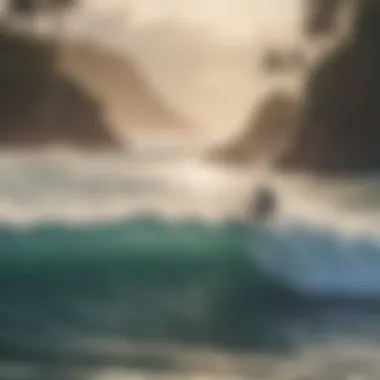
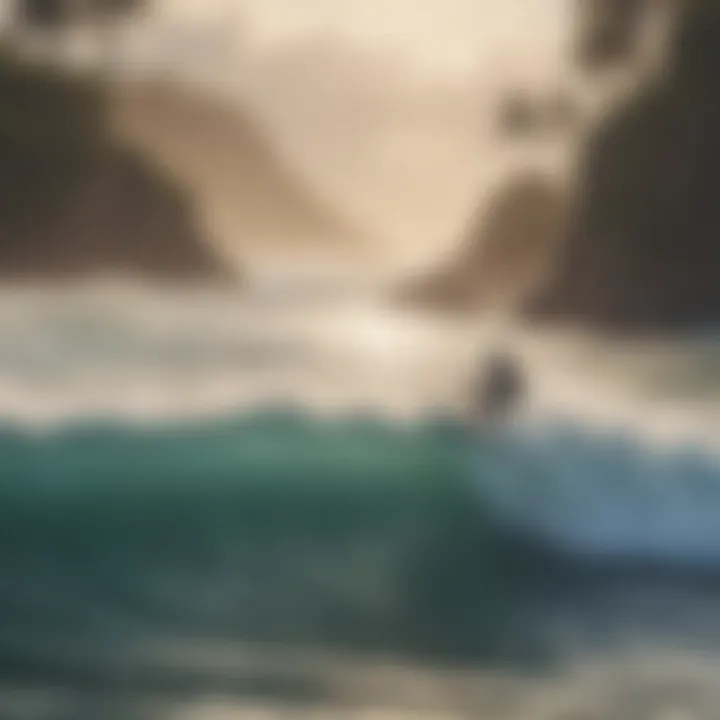
Catching the wave at the right moment can make or break your surfing experience. Understanding the waves and mastering the timing can lead to a more exhilarating ride.
- Watch the Swells: Anticipating the waves is essential. Swells usually have a pattern; pay attention to their tempo. When it starts rolling in, it’s your cue to get ready.
- Positioning: Arriving in the right spot is crucial. Too far back, and you’ll miss the wave; too far forward, and you risk getting wiped out. Gauge your distance so that you are in position as the wave begins to lift.
- Pop Up Timing: The moment the wave starts lifting you should be ready to pop up. Successful surfers master the art of timing their movements, transitioning from paddling to standing in one fluid motion. This seamless pop-up enhances control and balance on the board.
Interpreting the ocean is an ongoing learning process. With consistent practice, the skill of judging wave timing becomes more intuitive. The sea is unpredictable, but harnessing paddling strategies and timing can maximize your wave-catching opportunities.
"The ocean stirs the heart, inspires the imagination and brings eternal joy to the soul."
With these techniques, you're one step closer to becoming a proficient catch surfer. Embrace the journey, and remember that each wave is a new opportunity for growth and adventure.
Core Techniques for Bodyboarding
Understanding and mastering core techniques in bodyboarding is fundamental for both safety and performance in the water. These techniques are not just about looking good while gliding on waves; they enhance your connection with the ocean and improve your confidence as a rider. When executed well, these skills can turn a rough day at the beach into an exhilarating experience. In this section, we will delve into body positioning, balance, turning, and maneuvering—the pillars that support any aspiring bodyboarder.
Body Positioning and Balance
An often underestimated aspect of bodyboarding is the importance of body positioning. Correct positioning can be the difference between a successful ride and spending more time in the water than on your board. When you lie on your board, aiming for a streamlined position reduces drag, allowing you to catch waves more effectively. Aligning your body parallel to the board helps maintain balance, reducing the chance of wiping out unexpectedly.
Body positioning also involves where you place your arms and legs. Most experienced bodyboarders suggest keeping arms at your side or slightly extended, allowing you control over the board without excess flailing. A commonly used position involves placing your elbows on the board while your hands can act as rudders in the water. This position isn’t just comfortable; it gives you a sense of stability, reducing the frustration of falling or losing momentum when paddling into waves.
Adapting your body position to the changing conditions of the ocean is key. For instance, if the waves are bigger, shifting your weight toward the front of the board can help you catch the wave sooner, keeping you ahead of it as it barrels. On the other hand, if the waves are smaller, being balanced near the tail can allow for smoother rides while promoting better maneuvers.
Turning and Maneuvering
Once you've got body positioning down pat, the next logical step is turning. This isn't just about showing off; it's crucial for navigating waves and avoiding collisions. When you're barreling down a wave, quick and precise turning can keep you in the pocket of the wave and away from trouble.
How to Turn:
- Begin by shifting your weight onto the foot that corresponds with the direction you wish to turn. For instance, if you're turning left, lean more on your left foot.
- As you do this, adjust your shoulder in the same direction. This movement will naturally pull your board into the turn.
- Using your arms to guide your motion can act as an added leverage point, helping your body and board flow through the turn.
Many call these turns "snaps" or "cutbacks", depending on the sharpness and speed of the action. The trick is to practice in calmer waters at first, feeling what works best for your strength and board type, before venturing into more challenging waves. With practice, you’ll find that your ability to maneuver will drastically improve.
Learning to blend your turns with body positioning leads to a fluidity that is not just aesthetically pleasing; it can also give you an edge in competitive scenarios. This agility boosts your chances of handling rapidly changing surf conditions without getting swept offshore or caught in the turbulence.
"Mastering core techniques is less about the flashy moves and more about being in harmony with the wave and your board."
Surfing Conditions and Spot Selection
Understanding the right surfing conditions is like knowing the recipe to a perfect dish; every ingredient matters. The conditions directly influence not just the quality of surfing but also safety, which is paramount. This section explores how various elements, like wave types and wind conditions, affect both catch surfing and bodyboarding. Getting a grip on these aspects better prepares enthusiasts for their sessions, enhancing both enjoyment and skill development.
Understanding Wave Types
When it comes to catch surfing and bodyboarding, waves are the heartbeat of the ocean. Different wave types can either propel you to greatness or throw you off your game. Generally, waves can be categorized into:
- Beach Breaks: Here, waves break over a sandy bottom. They're often more forgiving and great for beginners. The shifting sand bars can produce varied wave shapes.
- Point Breaks: These waves form around a point of land, offering a more predictable wave shape. Despite being excellent for experienced surfers, they can become crowded quickly.
- Reef Breaks: Breaking over a reef creates powerful waves, often challenging for novices. The shallow water increases the risk of injury, but rewards seasoned surfers with adrenaline and impressive rides.
Understanding these variations allows surfers to select the right spot based on their skill level. For example, a beginner might prefer a mellow beach break, while an advanced surfer may seek the thrilling challenge of a powerful reef break.
"Timing and location are everything. A small change in wave type can drastically alter your ride."
Spot Evaluation for Safety
When you step onto the sand, the eyes don't just scan for waves. They're working overtime, assessing the entire environment. Evaluating a surf spot for safety should be on every surfer’s checklist. Here are some considerations:
- Current Strength: Pay attention to how strong the currents are. Some spots have rip currents that can pull you out to sea. Always check for local advisories or ask a local about water conditions.
- Wave Size: Bigger is not always better, especially for beginners. Overestimating your ability can land you in tough situations. Assess the wave size based on your comfort level.
- Obstacles: It’s crucial to be aware of surrounding hazards. This can range from rocks and coral to shallow areas that could lead to serious injuries.
- Local Wildlife: Knowledge of the local marine life is important. Some areas may have jellyfish or sharks, making certain times of the day or year riskier than others.
- Water Quality: Pollution can pose health risks. When choosing a spot, consider recent reports on water quality and be cautious of adverse conditions after heavy rainfall.
In summary, knowing how to evaluate surf spots isn’t just about finding the best waves. It’s about ensuring a safe and enjoyable experience on the water. To truly embrace the spirit of catch surfing and bodyboarding, one must respect the ocean and its unpredictable nature.
Social and Cultural Aspects of Catch Surfing
Catch surfing transcends the realm of just riding waves; it bridges communities and forges shared identities. The camaraderie among both seasoned surfers and newcomers reflects a unique tapestry of traditions and experiences. When one dons a wetsuit and paddles into the vast blue, they become a part of an age-old ritual, a gathering on the shore that echoes camaraderie and competition alike.
Community Building and Events
Events and competitions are the cornerstone of catch surfing culture. They are not merely platforms to showcase talent but act as catalysts for building strong relationships and networks within the community. Local surf contests, often held at popular beaches, tend to feel more like festive gatherings than serious competitions. The atmosphere buzzes with excitement while families set up picnic blankets and friends cheer each other on. Here, every wave caught isn’t just a personal triumph but a communal celebration, reinforcing the spirit of togetherness.
Furthermore, organizations and clubs often organize workshops and beach clean-ups which invite surfers of all skill levels. This collective effort creates a sense of belonging. For example, groups like the Surfrider Foundation mobilize surfers to protect their seas, thus intertwining the sport with advocacy for environmental stewardship. Events like these don’t just foster skills and friendships; they contribute to the greater good of the surfing environment, promoting sustainable practices among enthusiasts.
Influence on Local Cultures
Catch surfing is deeply intertwined with local cultures. From the sandy beaches of Hawaii to the rugged coastlines of California, each region boasts its catch surfing traditions and styles, heavily influenced by the geography and the community itself. Surfing schools offer lessons, and the local lingo often becomes a badge of honor, showcasing one’s depth of knowledge and experience.
This sport also serves as a cultural ambassador, introducing visitors to local customs. In many coastal towns, craft markets often spring up, showcasing local artists inspired by the ocean. Capturing the vibrancy of their environment, these artists create surfboards adorned with regional motifs, melding art and sport. Likewise, local cuisines often reflect the catch surfing lifestyle, with seafood festivals attracting both locals and tourists eager to indulge.
"Surfing isn’t just a sport; it’s a way of life that shapes communities and nurtures traditions."
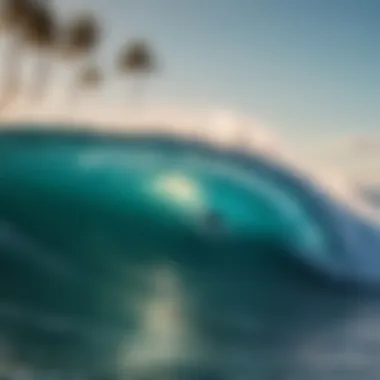
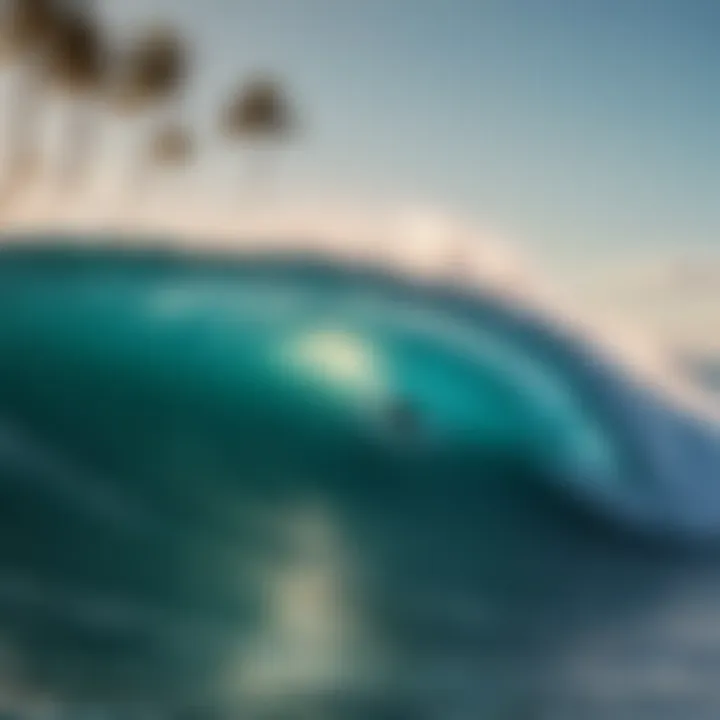
In essence, the social and cultural aspects of catch surfing weave together a narrative of collaboration, education, and shared values that permeate through waves. From local events fostering community spirit to regional differences enriching the sport’s diversity, catch surfing truly presents a unique approach to connection that goes far beyond the water.
Environmental Concerns in Surfing and Bodyboarding
In recent years, as more individuals have taken to the waves for the thrill of surfing and bodyboarding, the environmental implications of these beloved water sports have come under scrutiny. The ocean is not only our playground; it is also a delicate ecosystem that requires our protection. The importance of addressing environmental concerns in surfing and bodyboarding lies in ensuring that future generations can enjoy the waves just as we do today. Hence, discussing sustainable practices as well as the impact of pollution on surf spots positions us to take informed steps towards conservation.
Sustainable Practices
Sustainability is more than a buzzword; it's a necessary directive for anyone who loves the ocean. Here’s how you can embrace eco-friendly habits in your surfing and bodyboarding routine:
- Eco-conscious Gear: Look for boards made from recycled materials or those produced using sustainable manufacturing processes. Companies are increasingly offering biodegradable and environmentally friendly alternatives.
- Plastic-Free Surfing: Avoid single-use plastics. Whether it’s your water bottle or wrapper from an energy bar, every little bit counts. By steering clear of these products, surfers can reduce waste that inevitably makes its way into the ocean.
- Beach Clean-ups: Participate in or organize local beach clean-up events. Not only do they help to remove trash and debris from surf spots, but they also foster a sense of community among surfers.
To quote the Surfrider Foundation, "Cleanup events are a chance to give back to the ocean that gives us so much enjoyment." This community effort strengthens connections, while also being instrumental in protecting the aquatic environment.
Impact of Pollution on Surf Spots
Pollution poses a significant threat to the pristine nature of our beaches and surf breaks. The effects are multi-directional, not only impacting marine life but also reducing the quality of our surfing experiences. The key elements of this pollution are:
- Water Quality: Runoff from urban areas, agricultural lands, and sewage outfalls can introduce harmful bacteria and pathogens into the waves. This not only poses health risks for surfers but can also harm local marine environments.
- Marine Life Disruption: Polluted waters can lead to the death of marine organisms or disrupt their breeding grounds. Healthy reefs and marine habitats are essential not just for the ecological balance but also for maintaining suitable surf conditions.
- Decline in Local Economies: Polluted surf spots can deter tourism, affecting local businesses that depend on surf tourism.
- Health Implications: Surfers who venture into polluted waters risk various illnesses, such as skin rashes, gastrointestinal infections, and more serious diseases in extreme cases.
- Algal Blooms: Excess nutrients from runoff can create algal blooms that deplete oxygen and block sunlight, causing further harm to the underwater ecosystem.
- Beaches that were once bustling with surfers can become ghost towns, showing the direct link between pollution and economic vitality for coastal communities.
By facing these environmental challenges hand-on, each surfer and bodyboarder becomes a part of the solution. The beauty of nature lies in its intricacies; let’s commit to preserving that magic for ourselves and for those who will follow. Each wave surfed should remind us of our responsibility to protect the very environment that provides us with joy.
Future Trends in Catch Surfing and Bodyboarding
Keeping an eye on future trends in catch surfing and bodyboarding is crucial for enthusiasts looking to stay ahead of the curve in this ever-evolving sport. The ways in which technology, styles, and environmental considerations influence these activities can reshape the experience on the waves. Understanding these emerging trends not only aids individuals in improving their skills but also promotes sustainable practices that are vital for the preservation of our surf spots.
Technological Innovations
In today's world, technology has a profound impact on every sport, and surfing is no exception. Innovations range from advanced materials used in surfboards to digital tools that enhance surf forecasting. For instance, the advent of smart surfboards equipped with sensors is gaining traction. These boards can track wave height, speed, and even the rider's maneuvers, providing detailed feedback for improvement.
Moreover, the emergence of virtual reality experiences allows aspiring surfers to hone their skills digitally. Lessons from top instructors can now be accessed through VR setups, creating real-time environments that simulate actual surfing conditions. The idea of practicing your carve or snap from the comfort of your living room is fast becoming a reality.
"The future of water sports lies in the seamless blend of nature and technology. Understanding and harnessing these innovations will only elevate performance."
In conjunction with boards, surf cameras are becoming essential. High-definition cameras can be mounted on boards or helmets to capture rides, providing footage that can be analyzed for performance improvements or simply for the joy of reliving the adventure. You might be able to witness your epic take-offs and wipeouts in ways that were previously unimaginable.
Evolving Styles and Techniques
As with any sport, styles and techniques are always shifting. Today’s catch surfers and bodyboarders find inspiration from various sources, melding different approaches to create a more versatile riding style. For example, combining elements of traditional surfing with modern tricks can lead to a unique style that captures both grace and audacity.
Technique-wise, there's a visible shift toward emphasizing fluidity and control over aggressive maneuvers. This trend reflects a more holistic approach to catching waves, focusing on the rider's relationship with the ocean rather than just performing stunts. Understanding the subtleties of wave dynamics can lead to more effective wave selection and ultimately a more enjoyable session on the water.
Furthermore, we see a rise in eco-conscious styles that integrate sustainable practices. Surfers are choosing to ride boards made from biodegradable materials, and many are actively promoting clean ocean initiatives within their localities. These techniques not only enhance the performance aspect but also foster a deeper respect for the natural landscapes that we cherish.
In summary, keeping abreast of these future trends can be the difference between riding the waves and merely floating through the sport. Every innovation in technology and shift in technique holds the potential to enrich not just individual experiences, but the community as a whole.
The End: Embracing the Surf Spirit
As we draw the curtains on this exploration, it’s clear that catch surfing and bodyboarding are about more than just gliding over waves. They embody a spirit that wraps itself around the communities that cherish them. The essence of these sports lies in the connection—not only with the ocean but also with fellow enthusiasts who share your passion.
When we talk about embracing the surf spirit, we’re acknowledging a unique blend of exhilaration, respect for nature, and camaraderie among surfers and bodyboarders alike. Whether you’re a seasoned wave rider or a newbie just paddling into the experience, the opportunity to learn from one another and share in the joy of the surf provides a tangible sense of belonging.
Every dive into water carries with it the weight of tradition, technique, and personal stories. Each wave represents not just a challenge, but a chance to commune with the ocean. For many, catching a wave isn’t just a feat; it’s an escape, a meditative practice, and a way to unwind from the intricacies of day-to-day life.
The benefits of engaging with catch surfing and bodyboarding extend beyond physical fitness—it's about mental clarity and forging deep-rooted ties to the environment. It encourages you to be mindful, to respect local marine ecosystems, and to uphold communal values that define the surfing culture.
Personal Reflections on the Sports
Reflecting on these sports, those who ride waves often speak of a transformative experience. Far from their daily grind, each session in the water becomes an introspective journey. The thrill of conquering a challenging wave can instill a sense of accomplishment that transcends the moment.
Many surfers find themselves lost in thought while waiting for the perfect swell, often contemplating life’s larger questions amid the rhythmic dance of the ocean. Some describe it as a place where they reconnect with their authentic selves. In the surf, there’s a liberating sense of freedom, an unspoken understanding among surfers that what matters is the ride, not the accolades.
As I stroll along the beach, I often engage with those who echo similar sentiments—the laughter, stories, and camaraderie blend into one harmonious melody of surfing life. These experiences create bonds that last a lifetime.
Encouragement for New Surfers
To those just starting their journey into the waves: don’t hesitate to dive in! There’s a whole world waiting for you. The key to enjoying catch surfing and bodyboarding lies not in the perfect wave but in savoring every moment spent being immersed in the ocean experience.
Here are some tips to help ease your transition:
- Start Slow: Don’t go chasing the biggest waves right away. Pay your dues, catch smaller ones, and gradually build up your confidence.
- Find Your Community: Surround yourself with seasoned surfers or join local groups. They can offer invaluable insights and tips that can enhance your learning curve.
- Stay Open-Minded: Embrace mistakes as part of your learning process. Every wipeout teaches something valuable—don’t shy away from it!
- Enjoy the Journey: Understand that progress takes time. Celebrate your small victories; even riding white water is a milestone worth appreciating.
There’s a profound world to explore in the surf culture. Go ahead, grab your gear, and step into it. Each paddle out invites you to become part of a legacy that’s as vast as the ocean itself.
Remember: It’s not about mastery; it’s about connection—both with the waves and the people who share your love for the surf.















